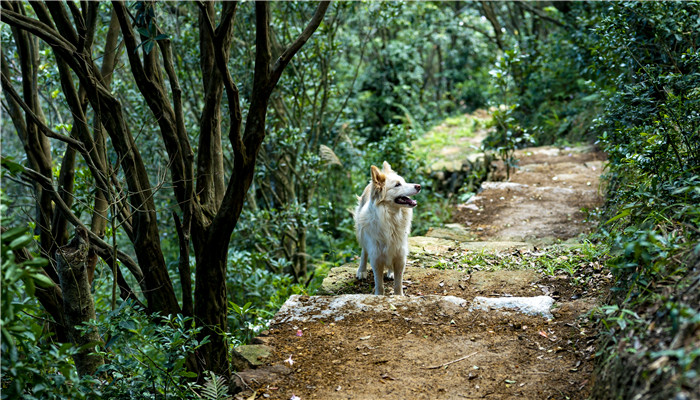From: Shenzhen Daily | Updated:2019-01-25

Be?it warm or a little chilly, flowers have been in bloom at Wutong Mountain, the tallest mountain in Shenzhen at 943.7 meters, since early January. And two of the mountain’s most famed species, Rhododendron moulmainense (毛棉杜鵑) and Enkianthus quinqueflorus (吊鐘花), have been attracting crowds of people to go and take delight in their elegant beauty.
Chinese New Year flower

The Chinese New Year flowers are in full blossom in Wutong Mountain.Liu Xudong
Enkianthus quinqueflorus, better known in South China as the Chinese New Year flower, blooms around the Spring Festival, also called the Chinese New Year. As it symbolizes auspiciousness and achieving high scores in China’s imperial examinations, it has been favored as a traditional festival flower in the Guangdong area since the mid-Qing Dynasty. Therefore, for families who have students attending the national college entrance examinations, they are more than happy to have this flower in their home.
The blooming deciduous shrubs or small trees, a species of the Ericaceae family, can be seen on the earth slopes in the Rhododendron Valley. Coming in white-pink to pink in color and shaped like small hanging bells in bunches, the delicate flowers create a glorious sight, making the mountain gorgeous and enchanting in the spring.

What’s special about the flower is that it blooms before it grows leaves. Its flowering order is also very interesting. In a flower bunch, other flowers will not bloom until the first fully blosoms.
Also, the flowers are rarely solitary or in pairs but normally have three to eight florets in a bunch. On an interpretive tour organized by the mountain scenic area Jan. 20, a visitor found 12 flowers in a bunch, which is really uncommon to see. One may wonder why the flowers, in umbels and clustered at ends of twigs, bloom downwards while their fruits grow upwards. They do so to protect their pollen from being destroyed by rain and ensure their seeds can be easily sent out.
Rhododendron moulmainense


As one of the famed flowers of Wutong Mountain, Rhododendron moulmainense, a species of the Rhododendron family, usually blooms in March. However, this year has turned out to be favorable for visitors seeing the flowers before the Spring Festival as 30 percent of the trees have bloomed up to 50 days earlier than normal.
“There are two reasons why Rhododendron moulmainense has flowered early this year. One is due to the warm winter,” said Wang Dingyue, the director of the Administrative Office of Wutong Mountain National Park. “The other is due to the flower’s response to emergencies caused by Super Typhoon Mangkhut in September last year, which had shaken the roots of the trees.”


Widely welcomed, Rhododendron moulmainense is a unique alpine Rhododendron in the center of one of the largest metropolises in the world and is distributed at the southernmost latitude. And the roughly 100,000 Rhododendron moulmainense trees scattered across Wutong Mountain are mainly distributed on slopes of around 400-800m in elevation. The oldest tree, more than 10 meters tall, is estimated to be over 100 years old.
The flowers, blooming on top of the branches, are fragrant with an umbel inflorescence with four to nine florets. The petals are pink or white with spotted orange inside. Though some flowers have bloomed, the peak flowering time is still March.
Interpretive tour

With various flowers beginning to bloom one after another at Wutong Mountain, interpretive tours to admire the Chinese New Year flowers are now being offered which will be followed by tours for Rhododendron moulmainense, according to Jia Caijuan, a Ph.D researcher with the Administrative Office of Wutong Mountain National Park. Citizens who wish to attend the tours can follow the official WeChat account, “Wutong Mountain Scenic Area” (梧桐山風(fēng)景區(qū)) for timely information as reservation is required for the tours.
Participants of the tours are advised to wear long-sleeved tops and full-length trousers to avoid getting bitten by insects and to prepare sunscreen to protect their skin.
How to get there



There are six routes to reach the tallest peak, Greater Wutong, and Lesser Wutong, with varying views along each route.

1. Wutong Mountain North Road Route: Wutong Mountain North Gate Memorial Archway—Wutong Mountain North Road—Phoenix Terrace—Hero Slope Square
This is the easiest and safest route.
Buses: 221, M445
2. Taishan Ravine Route: Wutong Mountain North Gate Memorial Archway—Taishan Ravine—Hulu Pool—Greater Wutong
This is a fun but difficult trail.
Buses: 221, M445
3. Dengyun Route: Wutongshan Xinju Bus Stop—Dengyun Trail—Lesser Wutong
This route has convenient public transport to the starting point and offers good tree shade.
Buses: 27, 113, 214, B621, B955, M468
4. Lingyun Route: Xiantong Sports Park—Wutong Mountain South Road—Lesser Wutong
This is the most stiff and difficult route.
Buses: 85, 111, M133, 205, 387, M555
5. Bitong Route: Yantian District Hospital Bus Stop—Bitong Trail—Greater Wutong
This offers spectacular views but is very challenging.
Buses: 85, E26, M191, 205, 387, M437, M520
6. Xiutong Route: Shenzhen Foreign Languages School Senior Department—Xiutong Trail—Bitong Trail—Greater Wutong
With beautiful views, this is the shortest route to the top.
Buses: M290, M348